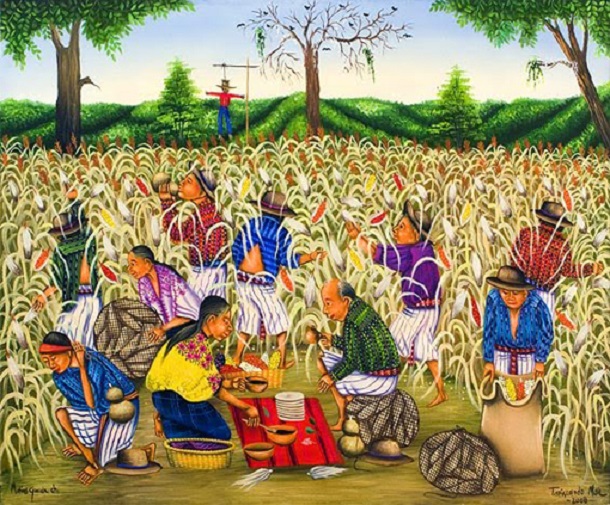In Maya creation myths, the gods created humans out of corn. Now, a new study from a site in Belize suggests corn really was important in the origin of the ancient Maya: More than half of their ancestry can be traced to migrants who arrived from South America sometime before 5600 years ago, likely bringing with them new cultivars of the crop that sustained one of Mesoamerica’s great cultures.
These previously unknown migrants “were the first pioneers who essentially planted the seeds of Maya civilization,” which emerged about 4000 years ago, says archaeologist and co-author Jaime Awe. A native Belizean now at Northern Arizona University, he, like many people in Belize, has some Maya ancestry. “Without corn, there would have been no Mayans.”
The discovery reveals a significant new source of ancestry for the Maya, whose civilization spanned one-third of Central America and Mexico, dotting the region with cities and monuments at its height more than 1000 years ago. Today, the Maya are an ethnolinguistic group of at least 7 million Indigenous peoples in Central America. The study also suggests that as in Europe, where farming arrived with immigrants from the Middle East, farming in the Americas spread as least in part with people on the move, rather than simply as know-how passed between cultures.
“This paper is really groundbreaking,” says Mary Pohl, a Maya archaeologist at Florida State University. “This is a dramatic revelation and is really stirring things up.”
Awe, a Maya archaeologist and former director of the Belize Institute of Archaeology, had long wondered how the Maya were related to the hunter-gatherers and early farmers who brought maize, manioc, and chiles to what is now Mexico, Belize, and Guatemala. But poor preservation of bones and DNA in the hot and humid climate had left few clues.
The new study analyzes remain from two rock shelters on the steep slopes of old-growth rainforest in the Bladen Nature Reserve in southwestern Belize, a 25-kilometer hike from the nearest road. Since 2014, archaeologist Keith Prufer of the University of New Mexico, Albuquerque, wildlife biologist Said Gutierrez of the Ya’axché Conservation Trust, and their colleagues have unearthed more than 85 skeletons from shallow graves in the rock shelters’ dry dirt floors.
CLICK HERE TO READ FULL ARTICLE ON SCIENCE.COM
TYT Newsroom


